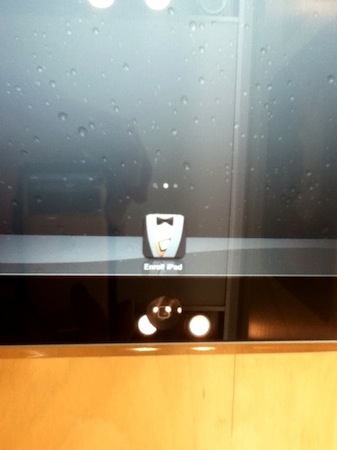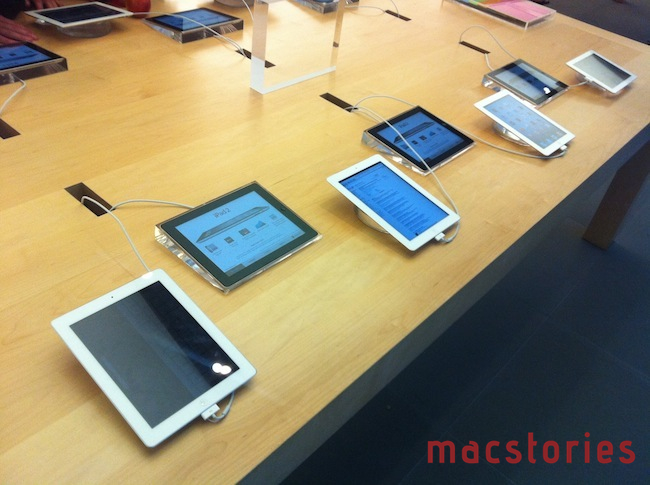A few more interesting tidbits about the iPad displays Apple has put up in their retail stores to showcase specs and prices and offer product comparisons have surfaced today. As we already knew, the iPads default to a device or computer they’re paired with to display additional information, making it impossible for customers to return to the iOS home screen by pressing the Home button. As reported by 9to5mac however, it is possible for store managers to “unlock” the devices with a custom gesture combination and use the regular iOS.
An Apple Store Manager relayed to us that the new iPad 2 displays are able to turn into “normal iPads” with a few swipes in secret combination. To find out if true, I went to the Soho store and tried it out. Yep, it works.
Additionally, MacRumors points out that an iPad was found unlocked in an Apple Store, with the iOS home screen displaying and “Enroll iPad” app icon. The app is not a native one but, as many suspected, a webclip that launches an AppleConnect interface in Mobile Safari to log in and associate the iPad to a Mac, iOS device or iPod inside the store. It’s likely that the custom retail software is getting all the data from Apple’s servers, meaning that all changes to iPad stores displays (prices, tech specs, artworks) can be performed remotely by Apple without local modifications by employees or store managers.
The interesting bit was the app that was on the dock which says Enroll iPad. It isnt actually an app but instead a Safari bookmark. Clicking on the app takes you to Safari shown in the last image. I tried to go back to the homescreen but I couldn’t seen the Home Button does not do anything.
Of all the rumors we’ve heard in the past weeks about the “Apple Store 2.0 experience”, there was one that claimed employees were instructed to download a folder containing GBs of data from Apple’s corporate servers – some suggested that private folder could be a retail-specific disk image for OS X Lion. We’re just speculating here, but it could be possible that employees were simply told to download the app data from the servers to test the retail software hours before launch, and the rumors posted were incorrect. Private folder or not, the new Apple Store experience has launched today, and now we’re waiting for the updated Apple Store app to go live in the Store.









